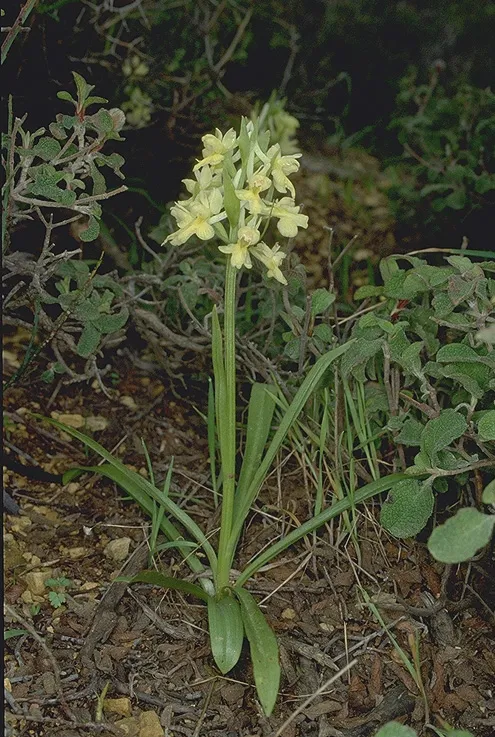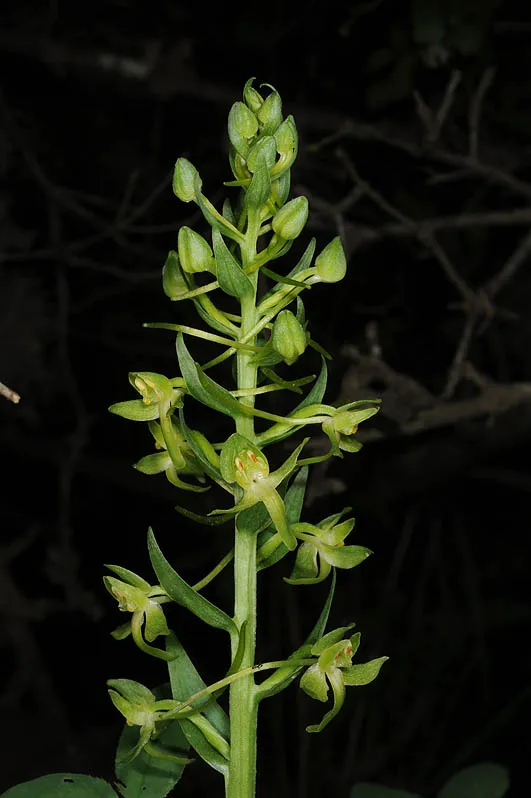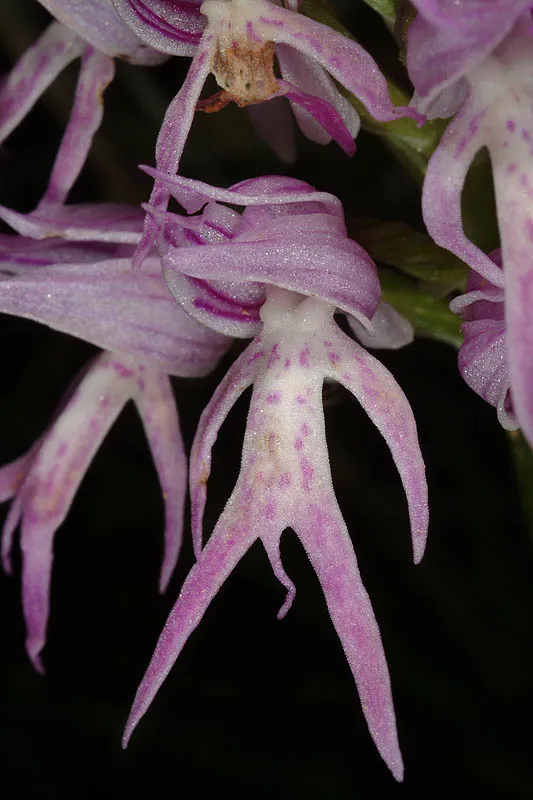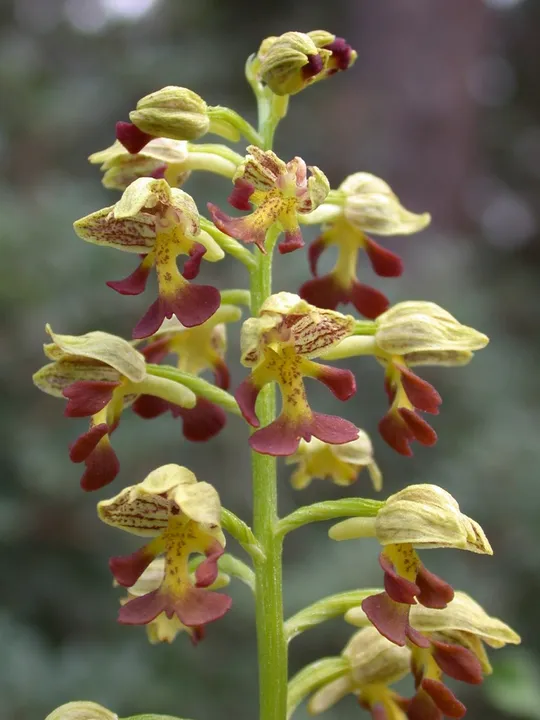Scarce Marsh Helleborine, Eastern Marsh Helleborine
Epipactis veratrifolia
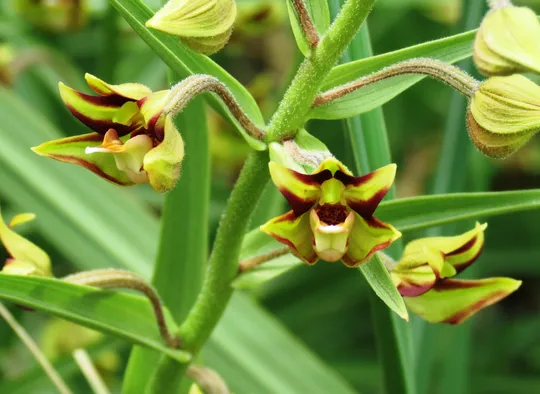
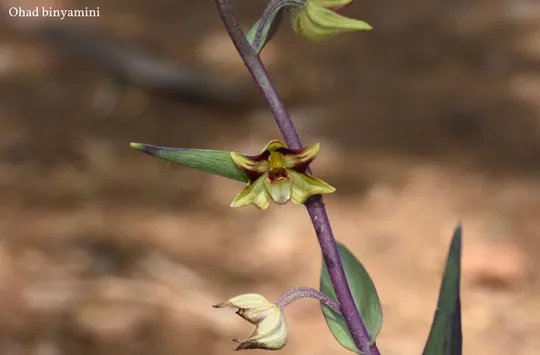
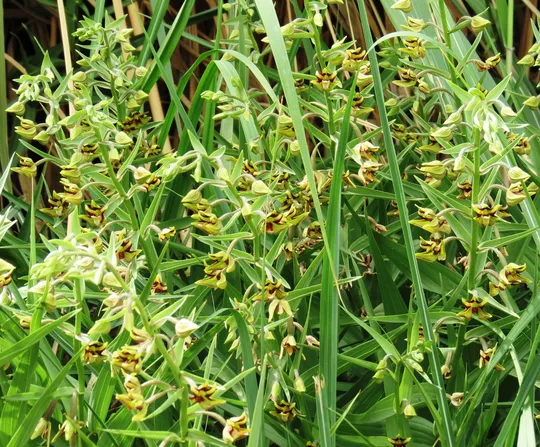
Epipactis veratrifolia is very rare, found
in only four regions. Its main distribution area in the country is in the southern
Negev springs and on the Dead Sea shores. Recently
it has been found in the Gamla Stream in the Golan (1983, 1990) and from 1980
is known from Hurshat Tal in the Hula Valley. The
latest population colonized abandoned fishponds and is probably a new colonizer.
On the western shores of the Dead Sea it grows mainly in the En Gedi Oasis: in Wadi
Arugot, Shulamit Cave in David Stream, and formerly also in HaNazir spring and in
the Hanazir spring above the ancient agricultural site above the En Gedi Field
Studies Center. Outside of En Gedi it was once known only from En Aneva in Wadi
Tse’elim, but the population there became extinct in the 1980s. The extinction in the
two springs, En Gedi and En Aneva, was a result of the area drying. In 1988,
Amos Sabah found a new population in Enot
Kane on the Dead Sea shore. This
population must have appeared after 1975, as a detailed survey was conducted by
Ruhama Berliner at that time, and E. veratrifolia and was not found at
the site. On the edge of the Arava Epipactis grew in a few springs: En Rahel,
En Tamid and En Erga, where it grew until 1995. However, since 2000 it has not
been found there, parallel to the drying of the springs (except En Tamid). Nevertheless, Epipactis was
found unexpectedly in a drainage ditch at the Sapir Center, and a large
population developed there until 2002.
In the Moab and Edom canyons hundreds of populations thrive, each with thousands
of individuals, in the numerous springs emanating from the sand stone cliffs
(Ravak and Shmida, 2000). It is
very possible that the Jordan populations are the source for the establishment
of a large Epipactis population in Enot Kane in the northern Dead Sea.
Steep cliff walls in
desert springs. This is the only Orchidaceae that grows in the desert and on
water seepages on cliff walls. In Hurshat
Tal the plant grows in abandoned fishponds.
The genus includes about 30
species, mainly found in
temperate Asia from Japan and China to the Caucasus. A few species grow in Europe, in the Mediterranean Basin, in Equatorial Africa and in North America.
In Israel, two species of Epipactis grow. Epipactis helleborine grows only in moist and shaded woodlands
in the Upper Galilee. E. veratrifolia
differs from E. helleborine in its narrow leaves and its concave leaf cross-section, unlike the broad, flat leaves of E. helleborine.
·
Drying up is the main reason for the disappearance
of the desert spring populations. Although E. veratrifolia disappeared from the dry springs, it has excellent dispersal
capabilities due to its capsule that contains about 3/4 million "dust seeds", which enable it to establish new populations (e.g., Sapir Center, Enot Kane and Hurshat Tal).
·
The En Gedi and Enot
Kane sites and Hurshat Tal are located within nature reserves.
The Epipactis
veratrifolia population at Enot Kane should be
monitored. Seeds should be collected to repopulate
desert springs steep cliffs with water seepage. Two of these springs
should be monitored and water should be
added to them if necessary.
Epipactis veratrifolia has an extensive distribution; it
grows in Middle Eastern countries (Turkey, Cyprus, and Syria-Lebanon) and in Asia, including
Nepal and India, as well as being common in Egypt,
Somalia and Ethiopia in Africa, in Algeria and Morocco in North Africa, and in Yemen, Oman and Saudi Arabia in the Arabian
Peninsula.
Epipactis veratrifolia
is a tropical Orchidaceae, growing in springs on cliffs and in thickets around water bodies in the hot
desert. The plant has disappeared from almost all desert springs due to their
drying up, and has survived only in En Gedi and En Tamid. The three new sites are probably only
temporary.
רווק,ש. ושמידע, א. 2000, אל קניוני מואב ואדום. הוצאת טבע הדברים.
Ivri, Y. and Dafni, A. 1977. The pollination eogy of Epipactis consimilis don (Orchidaceae) in Israel. New Phytology 79: 173-177.
Current Occupancy Map
| 1000 squre meter pixel | 5000 squre meter pixel | 10000 squre meter pixel | |
|---|---|---|---|
| number of observations | 0 | 0 | 0 |
| in total pixels | 0 | 0 | 0 |
| Family | orchidaceae |
| Classification | On the endangered species list |
| Ecosystem | Desert (springs) |
| Chorotype | Multi-regional, mainly Eastern Saharo-Arab, Eastern Mediterranean and Irano – Turanian |
| Conservation Site | En Gedi and Enot Kane |
| Rarity |
1
3
6
|
|---|---|
| Vulnerability |
0
2
4
|
| Attractiveness |
0
1
4
|
| Endemism |
0
0
4
|
| Red number |
1
3.2
10
|
| Peripherality | 0 |
| IUCN category | DD EW EX LC CR EN VU NT |
| Threat Definition according to the red book | Vulnerable |
 Based on:
Based on:
